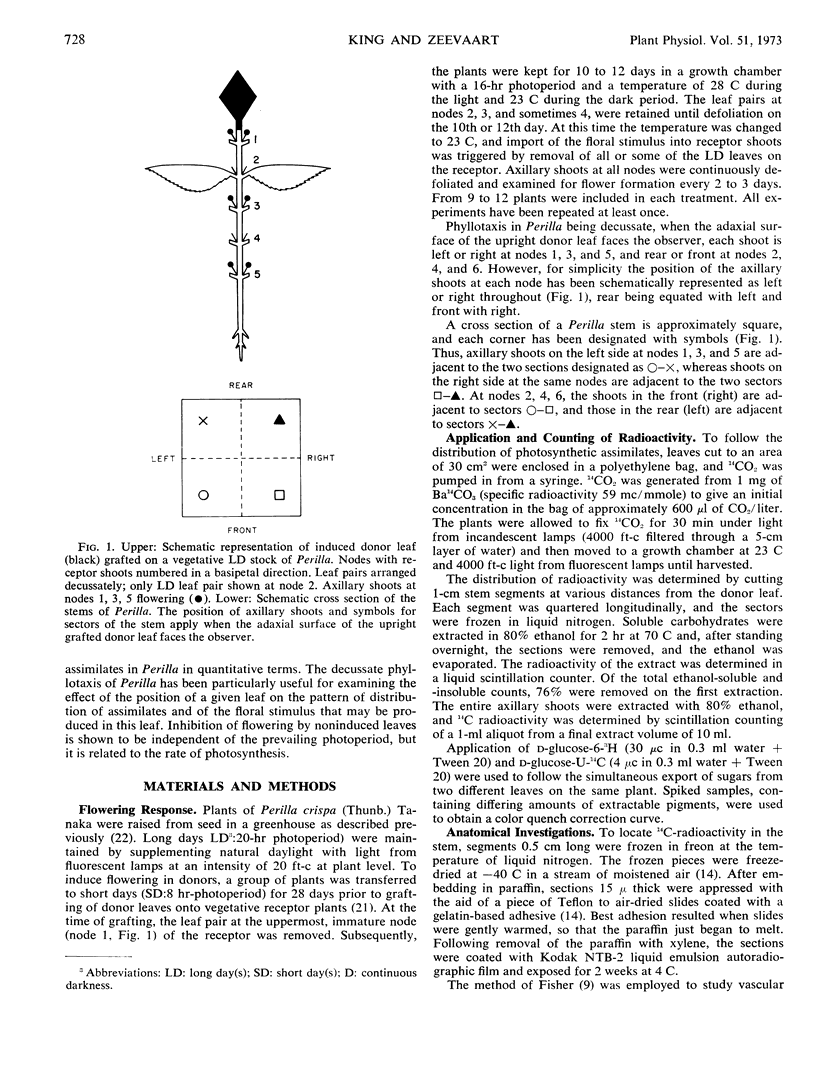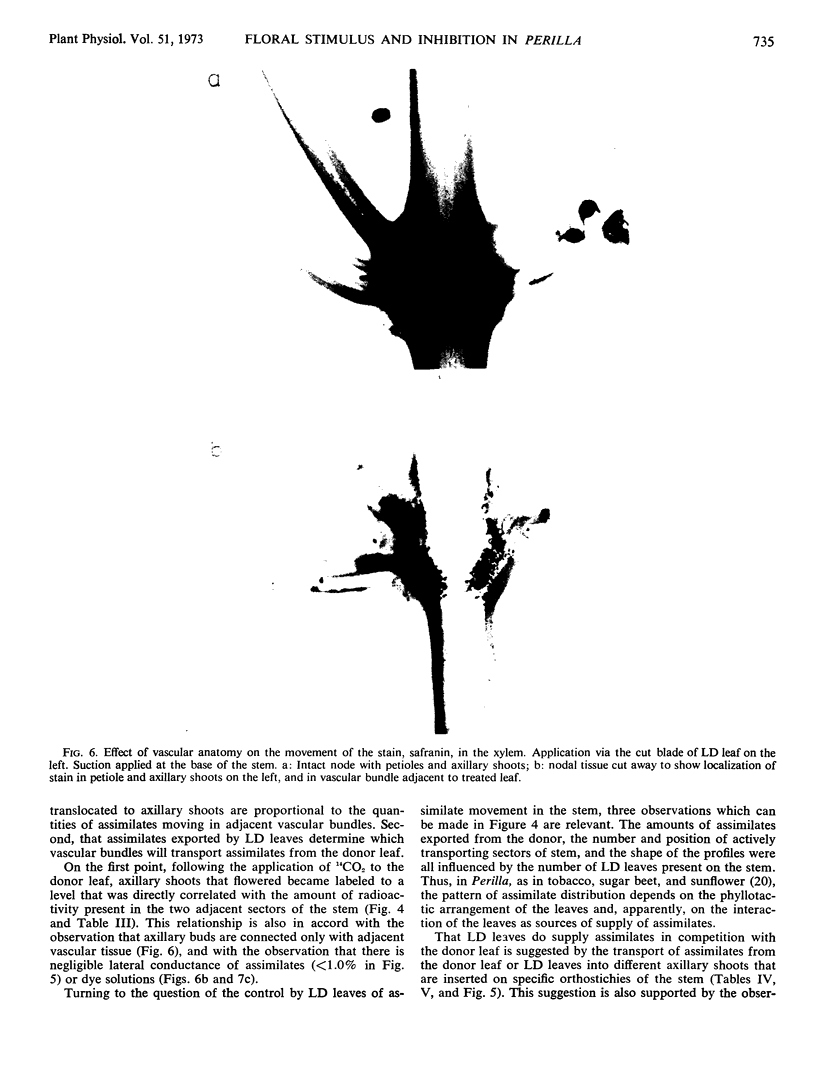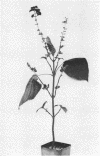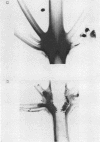Abstract
Photoperiodic control of flowering in the short day plant Perilla involves the transmission of a floral stimulus from induced leaves to the shoot apex. We have studied the basipetal movement of this stimulus and of 14C-labeled assimilates in plants with an induced leaf (donor) grafted into the uppermost internode of a vegetative plant in which the axillary shoots at various nodes along the stem function as receptors.
In agreement with earlier autoradiographic studies by Chailakhyan and Butenko (Transl. Fiziol. Rast. 1957, 4:426-438), a quantitative relationship was found between flower formation and the transport of labeled assimilates from the donor leaf into receptor shoots. The presence of noninduced leaves (i.e., leaves maintained on long day) on the receptor plant prevents flowering and assimilate import by shoots in the axils of the long day leaves and by shoots at nodes in the same orthostichy lower down on the stem. All these vegetative shoots import assimilates from the long day leaves.
Both the floral stimulus and the inhibitory effects of long day leaves are translocated basipetally over long distances and in specific parts of the vascular system which correspond to specific orthostichies of the stem. Movement in the xylem of the stain safranin indicates that assimilates from the long day leaves and from the donor can be transported in distinct regions of the vascular bundles in the stem. The pattern of assimilate distribution evidently depends on the pattern of vascular anatomy and on the relative contribution by the various sources of assimilates.
A light intensity close to that saturating for photosynthesis saturates long day inhibition of flowering. Moreover, under the appropriate experimental conditions, inhibition is not only caused by leaves in long day, but also by those in short day or darkness.
Apparently the floral stimulus moves in parallel with the assimilates in the phloem of Perilla, so that the pattern of assimilate distribution from different leaves determines the pattern of movement of the floral stimulus. It is, therefore, concluded that long day inhibition of flowering in Perilla is the result of competition between assimilate streams originating in the donor and long day leaves. A specific transmissible inhibitor is most likely not involved in the control of flowering in Perilla.
Full text
PDF











Images in this article
Selected References
These references are in PubMed. This may not be the complete list of references from this article.
- Fisher D. B. Kinetics of C-14 translocation in soybean: I. Kinetics in the stem. Plant Physiol. 1970 Feb;45(2):107–113. doi: 10.1104/pp.45.2.107. [DOI] [PMC free article] [PubMed] [Google Scholar]
- Fisher J. E. Staining and clearing vascular tissue in gramineae; a procedure suited for classroom use. Stain Technol. 1970 Mar;45(2):93–95. [PubMed] [Google Scholar]
- Gibby D. D., Salisbury F. B. Participation of Long-Day Inhibition in Flowering of Xanthium strumarium L. Plant Physiol. 1971 Jun;47(6):784–789. doi: 10.1104/pp.47.6.784. [DOI] [PMC free article] [PubMed] [Google Scholar]
- Raschke K. Saturation Kinetics of the Velocity of Stomatal Closing in Response to CO(2). Plant Physiol. 1972 Feb;49(2):229–234. doi: 10.1104/pp.49.2.229. [DOI] [PMC free article] [PubMed] [Google Scholar]





